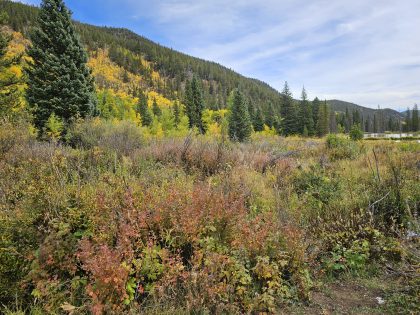Mabon and the Harvest Moon
Sunday gratefuls: Luke at 34. Bella Colibri. Rabbi Jamie’s Rosh Hashanah sermons. Shadow, the morning kisser. Artemis’ Cucumbers. Pizza and Burger plants in my son’s garden. Seoah’s half marathon. Mary’s political neighborhood. Mark and West Texas. From afar in Hafar. Ruth and Gabe, students. The Never Ending Story. Fourth Wing. Iron Flame.
Sparks of Joy and Awe: The Harvest
Year Kavannah: Wu Wei
Week Kavannah: Malchut. Wonder. “Wonder is the beginning of wisdom.” Socrates.
Tarot: Five of Pentacles. (Druid Craft)
- Focus on internal resources: For a querent, this version is a powerful reminder that sometimes the help we need is within us, but our focus on the problem prevents us from seeing the solution. It is a prompt to shift perspective, recognize internal resources, and understand that our perceived limitations may be an internal block rather than an external lack.

One brief shining: Trumpets blaring we would file into our seats at the three-quarter round thrust stage of the Guthrie Theater when it stood attached to the wonderful Walker Art Center, find our seats, and wait as the Gospel of Colonus, or the Bacchae, or the Christmas Carol came to life, poor players strutting and fretting upon the stage until they were heard no more. Applause!
Minnesota: Though now a Coloradan, a Rocky Mountain guy, a Jew, a widower, I once was a Minnesotan and happily so. Especially when it came to the arts. Those trumpets I mentioned? Oddly, when my family vacationed in Stratford, Ontario I had encountered them years before. Why? Because Michael Langham, the director of the Guthrie when I first attended on a student discount, had been the director of the Stratford Shakespeare Festival during those long ago family vacations.
The Walker allowed all of us tucked into the rarely visited Upper Midwest of the Heartland access to the latest and the greatest of modern and contemporary art. What a gift. The MIA, an encyclopedic museum, covered art from ancient Chinese ceramics and bronzes through impressionists and abstract expressionists and had its own contemporary art exhibitions.
 I spent twelve happy years guiding tour groups through the Asian galleries discussing the Jade Mountain(s), the Japanese Tea Ceremony, Song dynasty ceramics, and Korea’s amazing celadon glazed pottery. Yes I also led tours that included Goya and Rembrandt and Kandinsky, Chuck Close and Egon Schiele, but my heart remained always in the Asian collection.
I spent twelve happy years guiding tour groups through the Asian galleries discussing the Jade Mountain(s), the Japanese Tea Ceremony, Song dynasty ceramics, and Korea’s amazing celadon glazed pottery. Yes I also led tours that included Goya and Rembrandt and Kandinsky, Chuck Close and Egon Schiele, but my heart remained always in the Asian collection.
It was a distinct privilege to immerse myself in the thousands of years of art in the MIA’s collection, to have my understandings of the modern world upended at the Walker, to have the Western world’s best playwright’s effort brought to life while I attended the Guthrie.
Too, there was and will always be for me: The Saint Paul Chamber Orchestra. Decades of attendance acquainted me with Mozart, Teleman, Bach, Ives, Copeland, Fauré. And, ta dah! Kate.
 Today my chamber music is the golden swathes of Aspen Leaves on Black Mountain. My Guthrie is the rain swollen Maxwell Creek while the Arapaho National Forest recapitulates the MIA and the Walker. So be it.
Today my chamber music is the golden swathes of Aspen Leaves on Black Mountain. My Guthrie is the rain swollen Maxwell Creek while the Arapaho National Forest recapitulates the MIA and the Walker. So be it.








